2019 was a weird/incredible/infuriating year – between December 2018 and October 2019, my partner Oscar and I drove from the tiny village of Leenane on Ireland’s west coast, to Cape Town, South Africa. It was a long and wild ride that took us through twenty countries over 311 days. We were asked a lot of questions by different people we met during the trip, some about the perceived dangers in West Africa, some about visas and logistics, but most were about money.
“Did you win the Lotto?” was soon followed by, “how much money did your parents give you?”. The answers to those questions are a) no and b) none, but they might have paid us not to go.
Long-term overland travel is generally the reserve of retired people and influencers/sponsored folk. Very few sensible young people spend their life savings on a decidedly unglamorous style of travel when they could be achieving major milestones like advancing their careers, buying a house or making babies. Doing this trip on a budget was super important for us, and having driven a good chunk of the European continent on a shoestring in 2017, we were pretty confident we could do it. Whether you’re planning to tackle the Europe to Cape Town route yourself, or you simply like having a good old fashioned perve at other peoples finances (who doesn’t) I hope you find our Big Budget Blog helpful!
The vehicle

Namib desert, Angola
We settled on our 1996 Land Rover Discovery 1 for two reasons – that it was an absolute bargain, and that Oscar had spent a winters night sleeping under a shrub in rural England in order to obtain it, but that’s another story. We picked up Pumba for a cool €5000, a bloody good deal considering it was already kitted out with a roof tent, fridge, water tank, shelving, snorkel and just about everything else we needed for a long-term overland journey. Pumba needed a pretty serious scrub and quite a bit of repair work which Oscar was fortunately able to do himself (UJs, swivel joint seals, cam belt, engine pulleys, water pump, wheel bearings, brakes, rust removal, diffs – to name a few). We ended up fitting a second battery in the engine bay and wiring in a separate plant (deep cycle battery) in the rear of the truck for the fridge and electronics. Buying such an old vehicle which had been parked up for 10 years prior was a risk, but frankly, €5000 was all we had spare, so that’s what we got. The fact that Oscar is a diesel mechanic/engineer was a pretty big factor here, so people with limited mechanical knowledge may want to splash out a bit more.
Vehicle – €5000/$8402 NZD
Repairs + batteries- €1500/$2521 NZD
Sub-total = €6500/$10,923 NZD
Gear
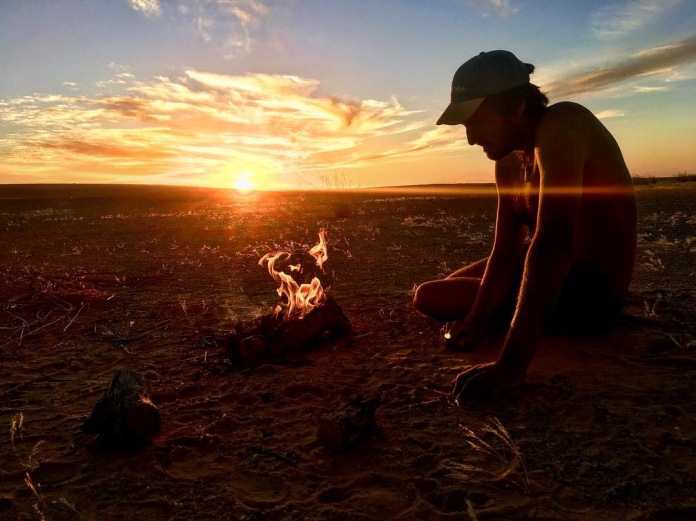
Prepping the camp fire, Mauritania
One of the most striking things about life in Africa is the way people make do with what they have, and do it with absolute panache. Kids hoon down the street on homemade wooden scooters, while photographers shoot portraits in the back of their converted vans, styled to look like a rolling meadow and/or French boudoir. We tried to absorb this mentality as much as possible, because while you will need a fair bit of stuff in order to live on the road long-term, almost none of it needs to be fancy or branded.
We bought basic camping gear from budget sports store Decathlon (three bottom of the range camp chairs which lasted perfectly well and head torches), everything else like pots, pans and cutlery we just took from our house in Ireland and emptied into the truck, easy! We bought two new water filters for the fitted filtration system, but everything else we already had with us or made do without for a time. For the six months between leaving Ireland and arriving in Nigeria, we cooked exclusively on camp fires and dug ourselves out of ditches with a broken chopping board, which until we hit the wet season, actually did a pretty good job. When we finally got to Nigeria and treated ourselves to a 3kg gas cooker and a spade, it cost us way less than it would have in Europe.
When it comes to recovery gear, don’t let Youtube people convince you that you need to go out and buy a bunch of brand new stuff when you might have something lying in your garage that will do the job just fine. We bought an €80 high-lift jack, as well as straps, ropes, pulley blocks, and D shackles, but our recovery tracks were just two long planks of garden grate and they worked a treat. We didn’t buy a winch and never desperately needed one either. When it comes to jerry cans for petrol/diesel, you can use old motor oil containers or alternatively just pick up used plastic 20L cooking oil containers on the beach once you get to Africa, they’re (unfortunately) everywhere.
Decathlon camp chairs and head torches – €70/$118 NZD
Water filter, jack, other recovery gear – €230/$387 NZD
Sub-total = €300/$505 NZD
General prep
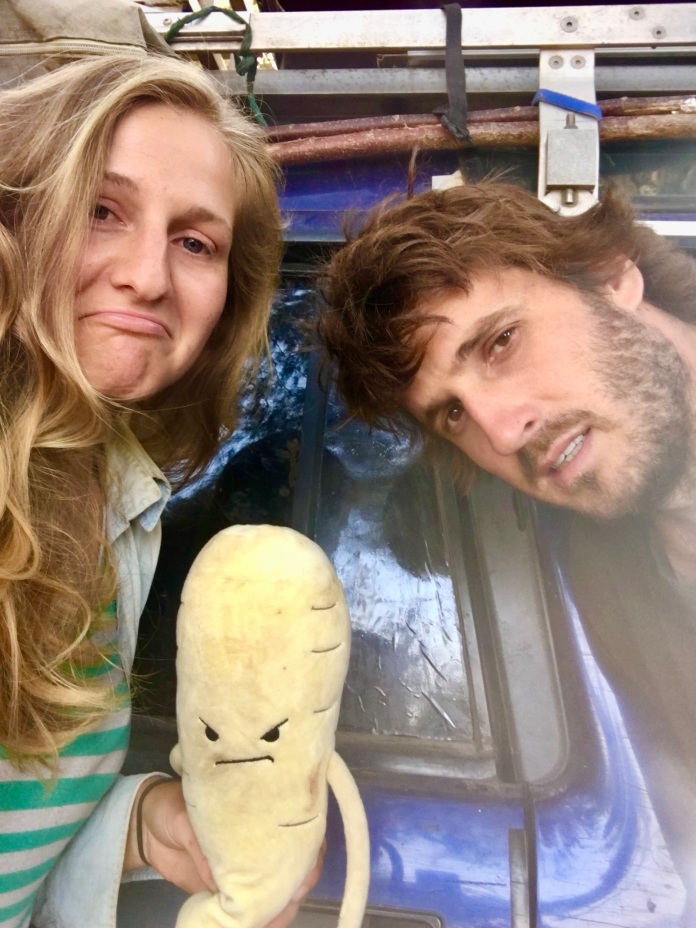
Post Pumba break-in in Senegal, covered by insurance
I hate to sound like your nan but if you are planning a trip like this YOU NEED TRAVEL INSURANCE. It’s a non-negotiable, Almost no-one will cover your actual vehicle on this type of journey, but you’d be surprised at the amount of countries you can visit on your personal travel insurance. In Africa we went through Morocco, Western Sahara, Mauritania, Senegal, Guinea, Cote d’Ivoire, Ghana, Togo, Benin, Nigeria, Cameroon, Congo, DRC, Angola and South Africa and were covered by World Nomads in every country. The catch is that you won’t be covered if you deliberately go to a region marked as Do Not Travel/Area of Extreme Risk by your Ministry of Foreign Affairs/other relevant authority. You should check your government foreign affairs website for the latest info, but the UK does particularly good visual maps of red zones in West Africa. Your route might force you to go through a chunk of red-zone in transit, but don’t spend any more time there than you have to. As we didn’t know how long our crusty old wagon would last, we initially bought three months of insurance and extended it as we went.
We also needed to get lots of needles in our arms, another unfortunate necessity of travel in Africa. You literally won’t get into many West African countries without a proof of a yellow fever vaccination, and you should probably get hepatitis, typhoid and meningitis jabs anyway. We also spent an unfortunate chunk of money on malaria pills before we found out that we couldn’t safely take them for the duration of our trip.
World Nomads Explorer insurance for two people for 10 months – €918/$1542 NZD
Yellow fever, typhoid and hepatitis A, Nimenrix conjugate meningitis, DTap (Diphtheria, tetanus, and acellular pertussis vaccine) vaccines – €515/$866 NZD
Malaria pills bought online – €254/$427 NZD
Sub-total = €1687/ $2835 NZD
Ireland, England, France and Spain

Camping near Altea, Spain
Because we switched banking apps somewhere in France, our budgeting for this first part of the trip is a little hazy, but from our leaving date on Christmas Day, 2018 to arriving in Morocco, we spent around €106 a day, ouch. This includes the price of the Ireland to England ferry, the Eurotunnel from Spain to France, the return Spain to Morocco ferry, and given we drove through four countries in just over a month, the diesel costs per day were pretty eye-watering too. As the tyres that came with the vehicle were pretty ancient, we had to fork out around €500 for parts and new tyres in Spain. We recommend going to Norauto as they have some of the cheapest tyre prices in Western Europe.
It goes without saying that Europe is a lot more expensive than Africa, and our per day cost is despite the fact that we only ever slept in our roof tent or at friends places, and did almost all of our own cooking.
We spent:
€4134/$6947 NZD total in 39 days
= €106/$178 NZD a day
Don’t worry, it gets better.
Once we got to Africa, we set ourselves a pretty strict budget of €30/$50 NZD a day (€15/$25 NZD each) for the remainder of the trip, and managed to stick to it pretty well until we hit the much more expensive southern countries and/or had pricey vehicle issues to deal with. Accommodation throughout West Africa is unfortunately still wildly overpriced for what you’re likely to get, so often the countries that hit our budget the hardest were ones where we couldn’t camp at all or couldn’t camp often.
Morocco

Pumba and Hamid, Erg Chebbi desert, Morocco
Morocco, while known for rorts in touristy areas, is super cheap if you head out into the desert or up the mountains in your own wheels. Freedom camping options abound, and the many paid campsites are pretty reasonably priced.
We spent:
€762/$1280 NZD total in 30 days
= €25.40/$42.70 NZD a day
Mauritania
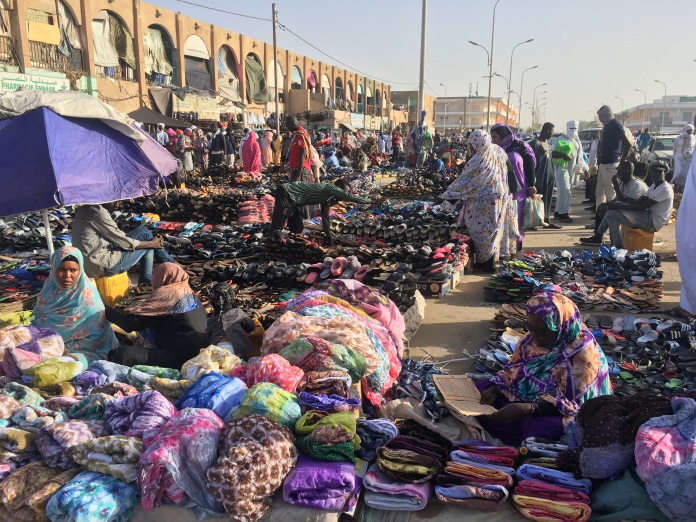
Market in Nouakchott, Mauritania
Mauritania is a gigantic desert and you could probably park up behind a monolith and no-one would find you for years. Ergo, very cheap.
We spent:
€616.40/$1036.20 NZD total in 23 days
= €26.80/$45 NZD a day
Senegal
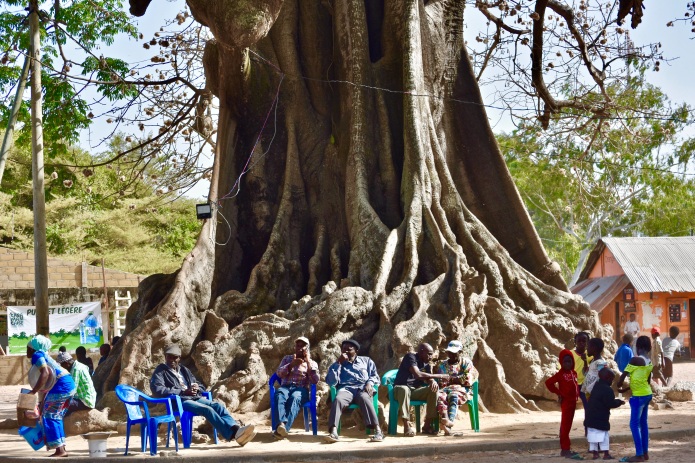
Diembering, Senegal
Senegal is a lot more developed than neighbouring Mauritania and Guinea, with lots of deliciously tempting eating options, beautiful art and pretty sweet paid campsites. This bumped our budget up a wee bit, but it was totally worth it.
We spent:
€636/$1069 NZD in 20 days
= €31.80/$53.50 NZD a day
Guinea

Saala Falls, Guinea
While you can wild camp in heaps of places in green and gorgeous Guinea, there is a serious lack of even vaguely affordable supermarkets, which nudged us a fair bit over budget. I’d recommend doing a substantial shop in Senegal for anything that’s not fresh produce.
We spent:
€552/$927.90 NZD in 15 days
= €36.80/$61.90 NZD a day
Côte d’Ivoire
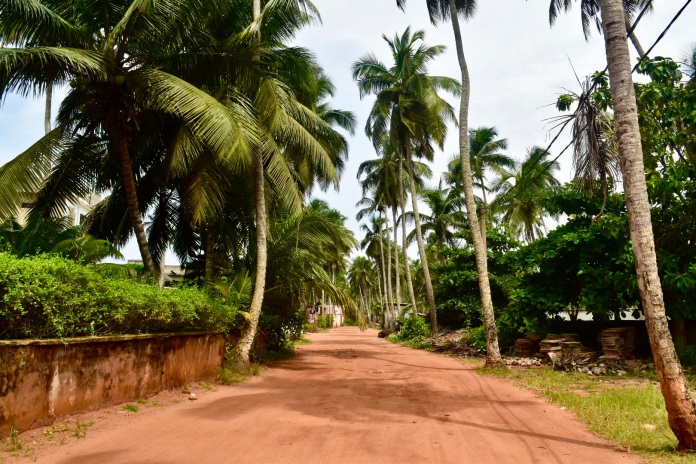
Assouinde, Cote d’Ivoire
Côte d’Ivoire is home to some of the priciest accommodation options in West Africa, and if you’re city-bound for a few days to chase visas, you’ll pretty much have no choice but to stay in a hotel/guesthouse. We didn’t spend much time here, which also bumped up our per day budget.
We spent:
€516/$867 NZD in 12 days
= €43/$72.27 NZD a day
Ghana
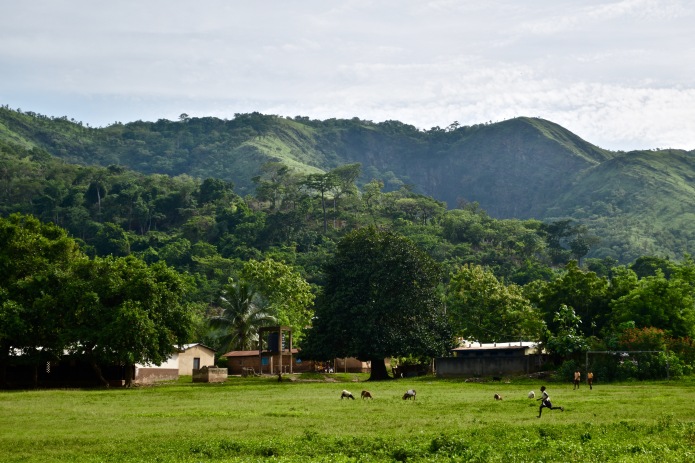
Wli, Ghana
Thanks to some highly diligent border control guards who almost didn’t let us in at all, our time in Ghana was cut very short despite there being heaps we wanted to see. More driving + less time = $$$
We spent:
€407/$684 NZD in 10 days
= €40.70/$68.40 NZD a day
Togo
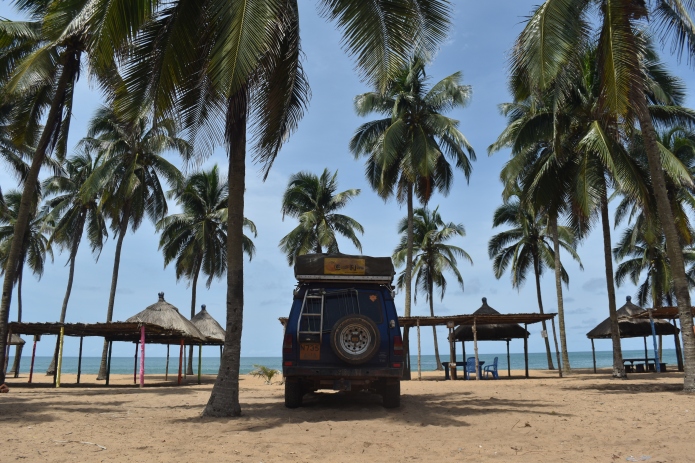
Coco Beach, Togo
Togo is super small and with plenty of gorgeous beachy or foresty spots to hang out in for a week or more, you don’t have to drive very far or spend very much to get the goods.
We spent:
€414/$695.80 NZD in 15 days
= €27.60/$46.40 NZD a day
——
Benin
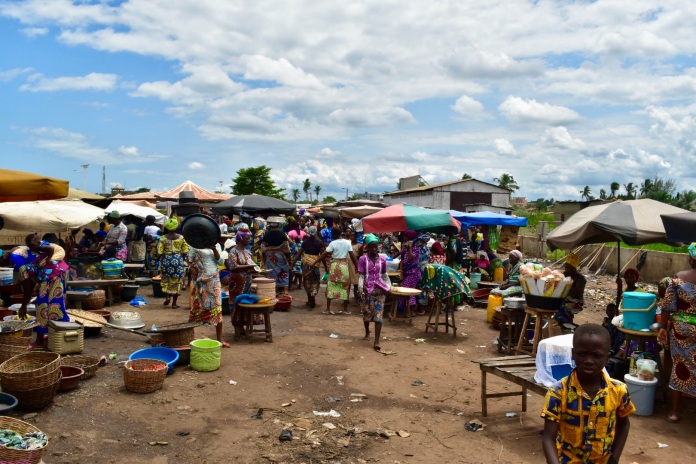
Ganvie Port, Benin
Spending-wise, Benin is basically the same as Togo, small and accessible with very few dishonest people trying to part you from your money, perfect.
We spent:
€366.80/$616.50 NZD in 14 days total
= €26.20/$44 NZD a day
Nigeria
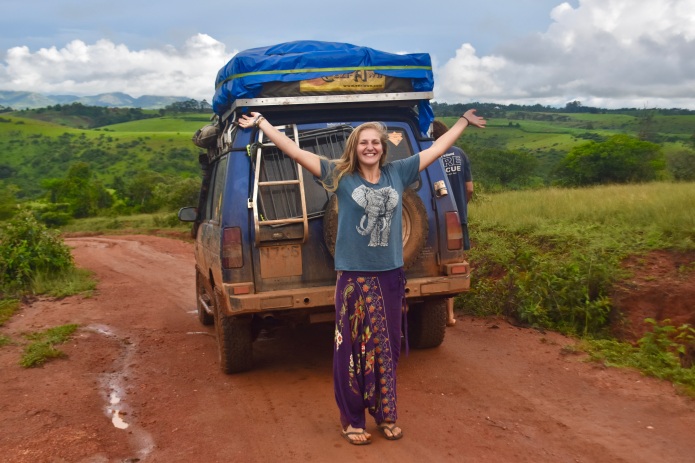
Taraba State, Nigeria
It’s very difficult to wild-camp in Nigeria, if the kidnapping stories don’t put you off attempting it, the military banging on your car door at 6am just might. We spent most of our nights in paid campsites, but the low cost of everything else mean we got off pretty lightly.
We spent:
€721/$1211.90 NZD in 22 days total
= €32.80/$55.10 NZD a day
Cameroon
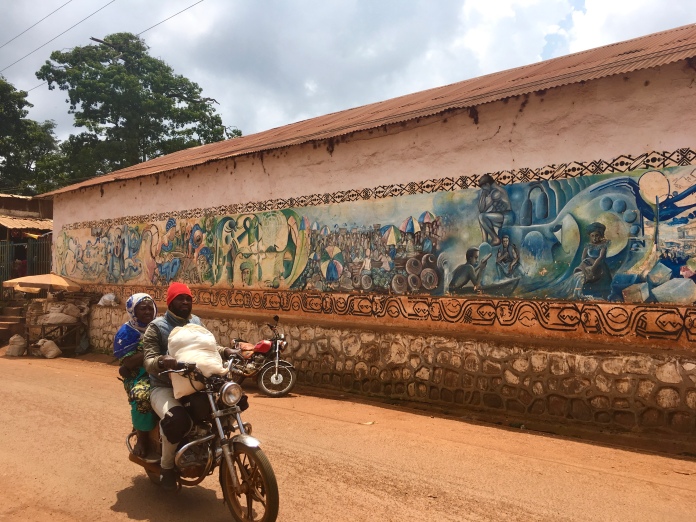
Foumban, Cameroon
Another country that’s not so easy to camp in, Cameroon cost us quite a bit more than anticipated thanks to accommodation and unexpected vehicle costs. Once the Anglophone/Francophone conflict settles down, the most beautiful parts of the country will be a lot more accessible.
We spent:
€556/$934.60 NZD in 10 days
= €55.60/$93.50 NZD a day
Congo + DRC
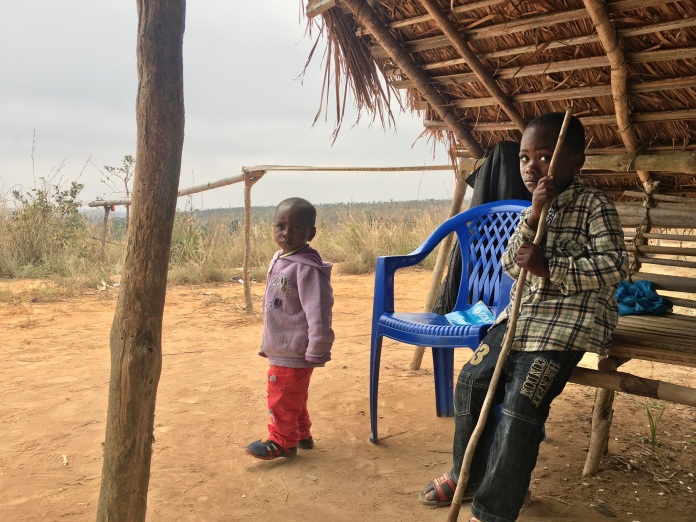
Congo/DRC border
The Congos are complicated places and rushing to avoid visa issues, as well as having to pay off police in Dolisie to avoid prison time for Oscar accounted for most of our overspend.
We spent:
€589/$990 NZD in 13 days total
= €45.30/$76.10 a day
Angola
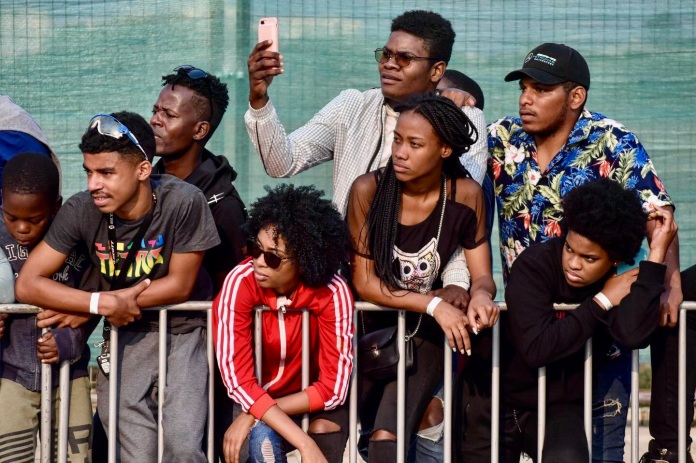
Luanda, Angola
Though the capital of Luanda has got a reputation as one of the most expensive places to live in the world, this really only applies to ex-pats in the oil and gas industry who can afford to live in pent-house apartments and shell out at the city’s flashiest bars and restaurants. If you live like Angola’s 99% by avoiding the finer things, you’ll be grand.
We spent:
€864/$1452.40 NZD in 32 days
= €27/$45.40 NZD per day
Namibia
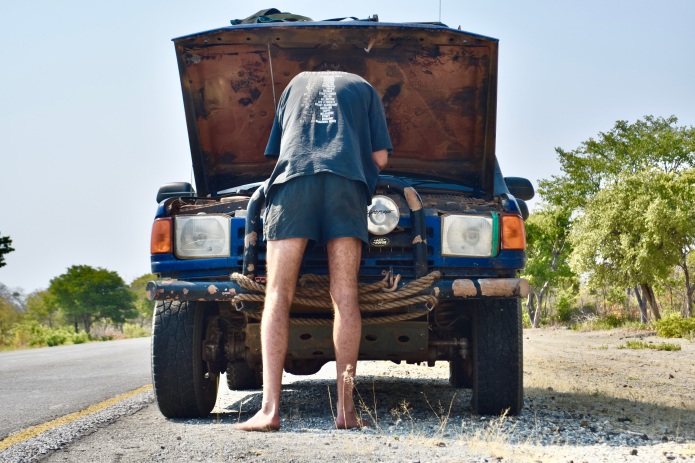
Broken down…again, Caprivi Strip, Namibia
Thanks to our one big breakdown in Africa, Namibia cost us heaps. Replacing several tyres and fixing a snapped steering rod was never going to be cheap, but if your vehicle hasn’t been battered to death in the Namib desert, this cost is easily avoided. Thanks to a constant stream of safari tourists, camping costs are significantly higher than they are further north, but food is quite cheap, so it balances out.
We spent:
€2697/$4534 NZD in 37 days total
= €72.90/$122.60 NZD per day
South Africa
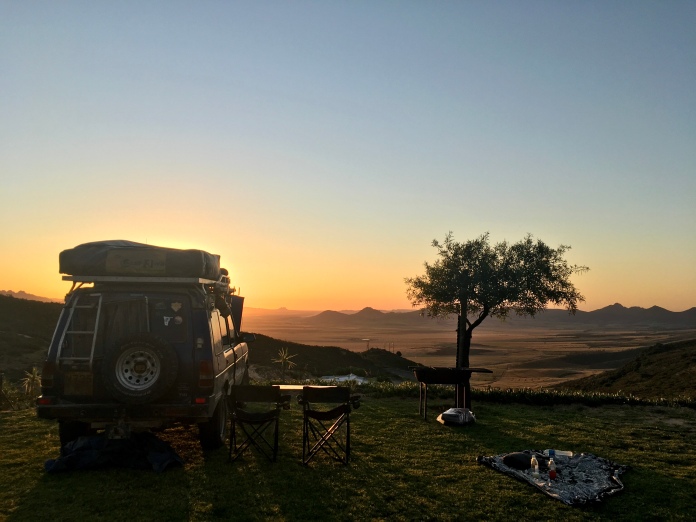
Citrusdal, South Africa
OK, South Africa is a place where we genuinely could have spent a lot less than we did, but after three quarters of a year on the road, no-one was going to stop us from drinking lots of beers and eating gatsbys the size of a Mini Cooper. Like Namibia, camping can be expensive, as well as things like mobile data, but if this is the end of the road for you, just forget about your pedantic budgeting and party on down bru.
We spent:
€1541/$2591 NZD in 23 days
= €67/$112.90 NZD a day
Which brings us to a grand total of :
€23,859.20/$40,109.44 NZD
This was more than we were hoping to spend, but still pretty good in the grand scheme of things. We would have spent a hell of a lot more on New Zealand rent and living costs if we had stayed at home, and as you’ll quickly find out if you decide to go on a similar trip, you can’t put a price on good times and an inexhaustible supply of pub yarns.
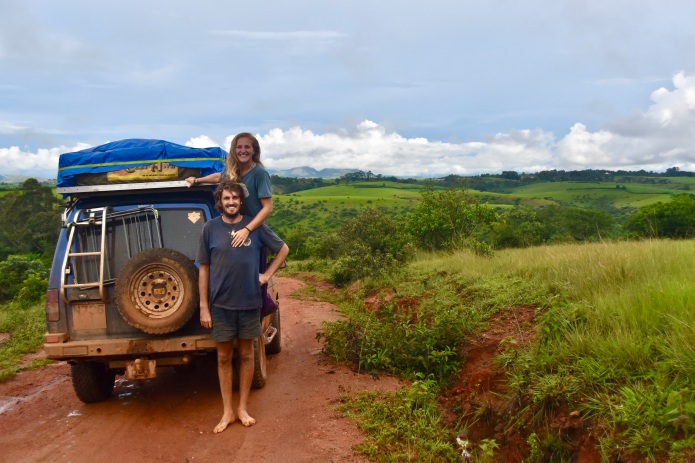
IMPORTANT NOTE:
Although our trip was done ‘on the cheap’ it goes without saying that we wouldn’t have been able to complete it without the immense privilege we’ve been fortunate enough to have in our lives. We both worked good jobs in New Zealand before leaving in 2017, we worked in Ireland the following year, and I was able to do freelance work for the duration of our Africa trip. Although our parents didn’t contribute financially to our trip, we were able to stay with family on our immediate return to New Zealand, saving ourselves a month or so of extortionate New Zealand rent prices. Thanks to Ma and Pa Curry and Papa Hall for the bed and beersies.
If you want to see what it’s like to overland West Africa with your very own eyeballs, you can check out our Facebook, Instagram, or Youtube.

